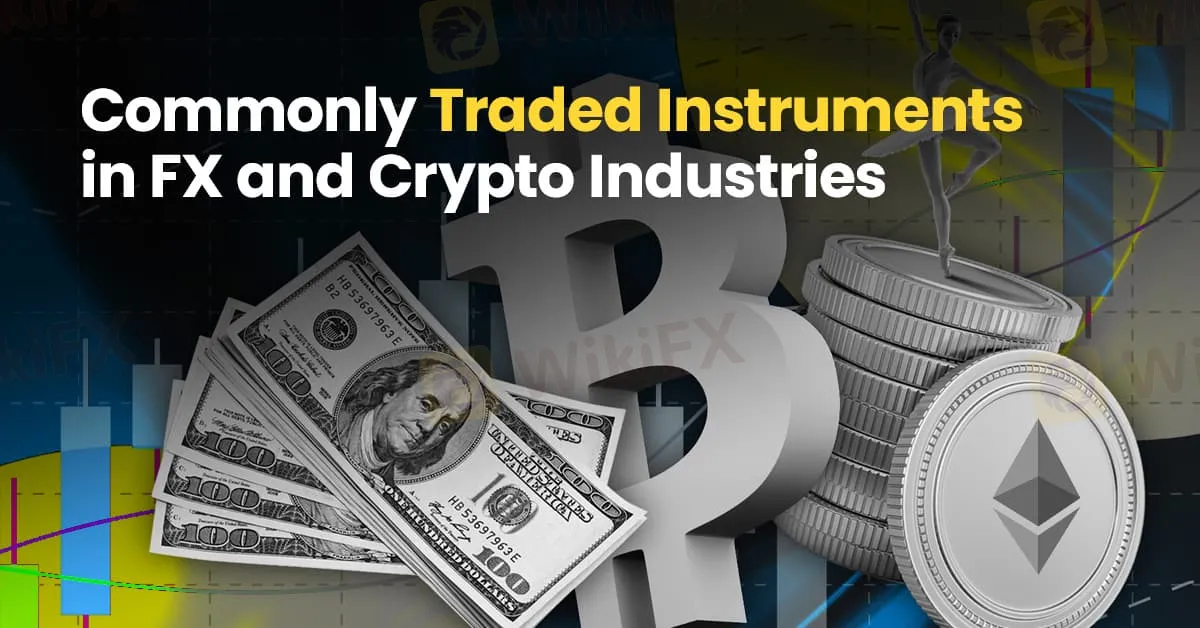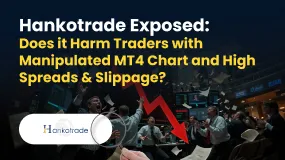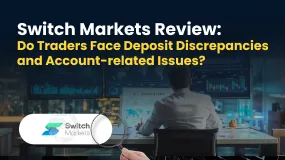简体中文
繁體中文
English
Pусский
日本語
ภาษาไทย
Tiếng Việt
Bahasa Indonesia
Español
हिन्दी
Filippiiniläinen
Français
Deutsch
Português
Türkçe
한국어
العربية
Commonly Traded Instruments in FX and Crypto Industries
Abstract:In the dynamic realm of online trading, the variety of instruments available to traders is vast. From traditional forex pairs to emerging cryptocurrencies, understanding the commonly traded instruments can enhance your trading strategy and broaden your investment horizons. Here, we delve into the most popular instruments in the forex and cryptocurrency markets, exploring their unique characteristics and the opportunities they offer.

In the dynamic realm of online trading, the variety of instruments available to traders is vast. From traditional forex pairs to emerging cryptocurrencies, understanding the commonly traded instruments can enhance your trading strategy and broaden your investment horizons. Here, we delve into the most popular instruments in the forex and cryptocurrency markets, exploring their unique characteristics and the opportunities they offer.
In the dynamic realm of online trading, the variety of instruments available to traders is vast. From traditional forex pairs to emerging cryptocurrencies, understanding the commonly traded instruments can enhance your trading strategy and broaden your investment horizons. Here, we delve into the most popular instruments in the forex and cryptocurrency markets, exploring their unique characteristics and the opportunities they offer.

Forex trading, or foreign exchange trading, is the largest financial market globally. It involves trading currency pairs, where one currency is exchanged for another. Here are the most commonly traded forex pairs:
Major Pairs:
1. EUR/USD (Euro/US Dollar): This is the most traded currency pair in the world. Its high liquidity and low volatility make it a favourite among traders.
2. USD/JPY (US Dollar/Japanese Yen): Known for its significant trading volume, this pair is influenced by economic policies and market sentiment in the US and Japan.
3. GBP/USD (British Pound/US Dollar): Often referred to as “Cable,” this pair is known for its volatility and the impact of UK economic data and Brexit developments.
4. USD/CHF (US Dollar/Swiss Franc): This pair is considered a safe haven during market turmoil due to the Swiss francs stability.
Cross Pairs:
These pairs do not include the US dollar but involve major currencies, such as:
1. EUR/GBP (Euro/British Pound): This pair reflects the economic relationship between the Eurozone and the UK.
2. EUR/JPY (Euro/Japanese Yen): This pair is popular for carry trades, where traders benefit from the interest rate differential between the two currencies.
Exotic Pairs:
Exotic pairs involve a major currency and a currency from a developing or smaller economy. Examples include:
1. USD/TRY (US Dollar/Turkish Lira): Known for its high volatility and potential for significant profit, but also higher risk.
2. EUR/PLN (Euro/Polish Zloty): This pair offers opportunities tied to the economic performance of Poland relative to the Eurozone.

Cryptocurrency trading has surged in popularity, offering a decentralized alternative to traditional currencies. Here are the most commonly traded cryptocurrencies:
Bitcoin (BTC): Bitcoin is the first and most well-known cryptocurrency. It serves as a digital gold standard in the crypto world. Due to its widespread adoption and high liquidity, BTC is a staple in many trading portfolios.
Ethereum (ETH): Ethereum is more than just a cryptocurrency; its a platform for decentralized applications (dApps). ETH's price movements are driven by its use case in smart contracts and the overall health of the blockchain ecosystem.
Ripple (XRP): Ripple focuses on enabling real-time, cross-border payments with minimal transaction fees. Its unique consensus algorithm differentiates it from other cryptocurrencies, making it attractive for institutions.
Litecoin (LTC): Often considered the silver to Bitcoin‘s gold, Litecoin offers faster transaction confirmation times. It’s popular among traders for its similarities to Bitcoin but with some technical differences that enhance its efficiency.
Binance Coin (BNB): Initially created to pay for fees on the Binance exchange, BNB has evolved to offer various use cases within the Binance ecosystem. Its growing utility has made it a prominent player in the crypto market.
Stablecoins: Stablecoins like Tether (USDT) and USD Coin (USDC) are pegged to traditional currencies (usually the US dollar) and offer stability amidst the volatility typical of the crypto market. They are used for trading and as a store of value.
While forex and cryptocurrencies are primary focuses, many traders also engage in commodities and indices:

1. Gold (XAU/USD): A traditional safe-haven asset that traders flock to during economic uncertainty.
2. Oil (WTI and Brent Crude): Prices are influenced by geopolitical events, supply and demand dynamics, and OPEC decisions.

1. S&P 500: This index represents the performance of 500 large companies listed on stock exchanges in the United States.
2. NASDAQ 100: Focuses on the 100 largest non-financial companies listed on the NASDAQ stock exchange, heavily weighted towards technology.
In conclusion, understanding the commonly traded instruments in the forex and cryptocurrency markets is crucial for any trader. Each instrument comes with its own set of characteristics, influencing factors, and risk-reward profiles. By diversifying your trading portfolio across different instruments, you can better manage risk and capitalize on a broader range of market opportunities. Whether you are trading major forex pairs, diving into the world of cryptocurrencies, or exploring commodities and indices, a well-rounded knowledge base is essential for success in the dynamic trading landscape.

Disclaimer:
The views in this article only represent the author's personal views, and do not constitute investment advice on this platform. This platform does not guarantee the accuracy, completeness and timeliness of the information in the article, and will not be liable for any loss caused by the use of or reliance on the information in the article.
Read more

Hankotrade Exposed: Does it Harm Traders with Manipulated MT4 Chart and High Spreads & Slippage?
Have you witnessed a manipulated MT4 chart on Hankotrade login, showing inaccurate trading figures? Have you been victimized by high swap fees, inflated spreads, and massive slippage? Is the payment processing time too long at Hankotrade? Do you face downtime issues, especially when the New York trading session is on? These are some top complaints against the Belize-based forex broker. In this article, we have shared these complaints. Take a look!

Switch Markets Review: Do Traders Face Deposit Discrepancies and Account-related Issues?
Do you fail to deposit your funds into the Switch Markets forex trading account? Earned profits, withdrew them too, but did Switch Markets block your deposits? Wanted to close your trading account due to payment-related issues, but in turn got your emails blocked by the Australia-based forex broker? Faced a negative trading account balance because of illegitimate trade order execution? Many traders have shared these stories about Switch Markets on broker review platforms. In this Switch Markets review article, we have mentioned the same. Read on!

Is IEXS Safe or a Scam? A 2025 Review Based on 13 User Complaints and Regulatory Red Flags
You're asking a direct and important question: Is IEXS safe or a scam? As someone who might trade with them or already does, this is the most important research you can do. While IEXS says it is a global broker with over ten years of experience, a detailed look at its regulatory status and many user reviews shows serious warning signs that cannot be ignored. The evidence suggests a high-risk situation for traders' capital. This review will examine the available information, from official regulatory warnings to concerning first-hand user complaints, to give you a clear and fact-based view of the risks involved in trading with IEXS. Our goal is to give you the facts you need to make a smart decision.

Having Trouble Getting Your Funds Out of IEXS? A Simple Guide to Delays and Solutions
Are you having trouble withdrawing funds from your IEXS account or facing delays getting your funds? Not being able to access your own capital is one of the most stressful situations any trader can face. It breaks down your basic trust with a broker. This isn't just annoying - it's a serious problem that can mess up your financial plans and cause a lot of worry. This guide goes beyond basic advice. We'll look at real user experiences and official regulatory information to give you clear answers. Our goal is to help you understand why IEXS withdrawal problems happen and show you practical steps you can take. We understand your concerns and want to give you the information you need to handle this tough situation.
WikiFX Broker
Latest News
CQG Partners with Webull Singapore to Power the Broker’s New Futures Trading Offering
【WikiEXPO Global Expert Interviews】Ashish Kumar Singh: Building a Responsible and Interoperable Web3
IEXS Review 2025: A Complete Expert Analysis
CySEC Flags 21 Unauthorized Broker Websites in 2025 Crackdown
FONDEX Review: Do Traders Really Face Inflated Spreads & Withdrawal Issues?
IEXS Regulation: A Complete Guide to Its Licenses and Safety Warnings
Does WealthFX Generate Wealth or Losses for Traders? Find Out in This Review
WinproFx Withdrawal Problems: A Complete Look at Delays and User Reports
FXPrimus Review: Is FXPrimus Regulated and Reliable for 2025?
Simulated Trading Competition Experience Sharing
Currency Calculator



